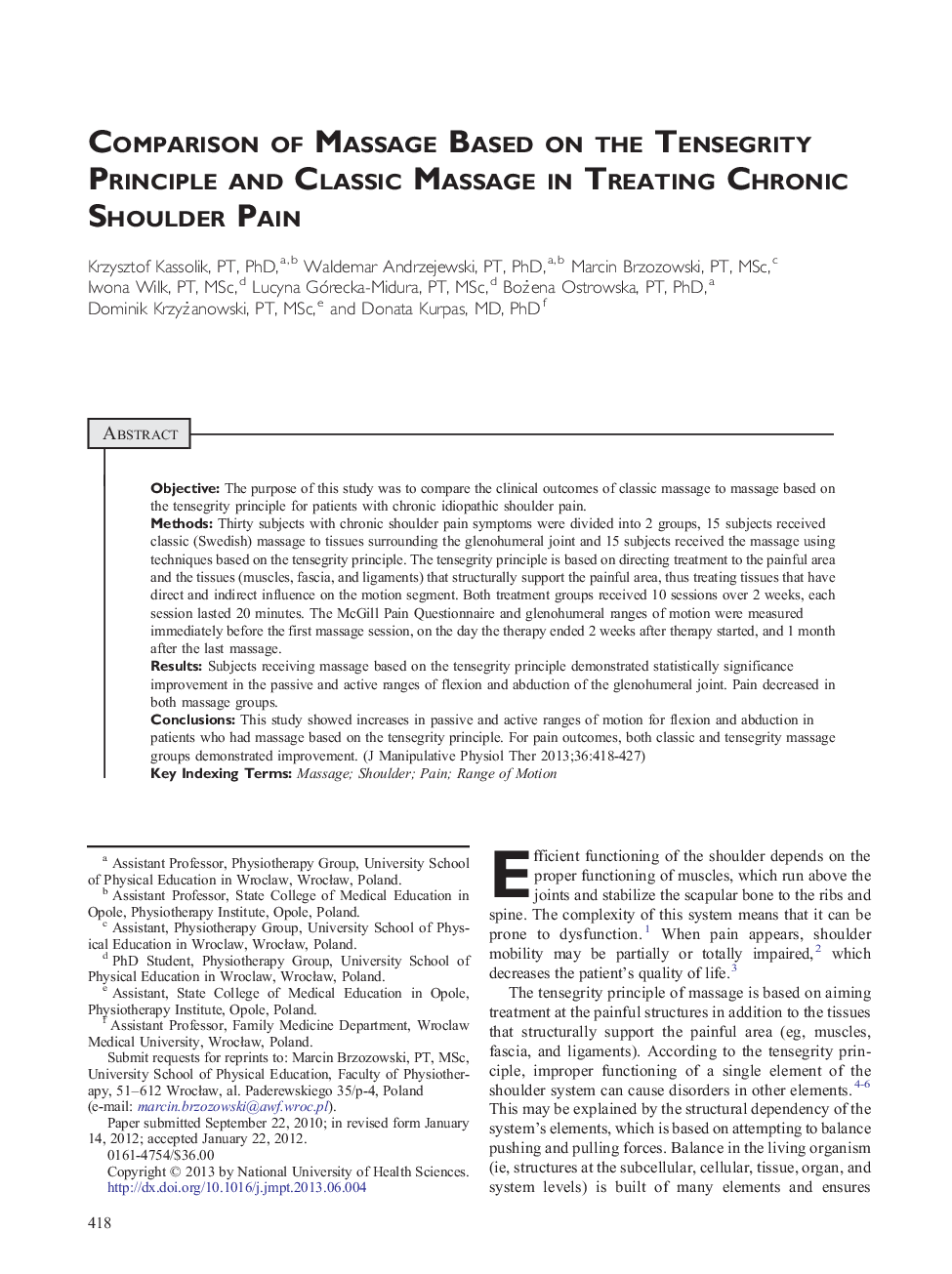| Article ID | Journal | Published Year | Pages | File Type |
|---|---|---|---|---|
| 2620741 | Journal of Manipulative and Physiological Therapeutics | 2013 | 10 Pages |
ObjectiveThe purpose of this study was to compare the clinical outcomes of classic massage to massage based on the tensegrity principle for patients with chronic idiopathic shoulder pain.MethodsThirty subjects with chronic shoulder pain symptoms were divided into 2 groups, 15 subjects received classic (Swedish) massage to tissues surrounding the glenohumeral joint and 15 subjects received the massage using techniques based on the tensegrity principle. The tensegrity principle is based on directing treatment to the painful area and the tissues (muscles, fascia, and ligaments) that structurally support the painful area, thus treating tissues that have direct and indirect influence on the motion segment. Both treatment groups received 10 sessions over 2 weeks, each session lasted 20 minutes. The McGill Pain Questionnaire and glenohumeral ranges of motion were measured immediately before the first massage session, on the day the therapy ended 2 weeks after therapy started, and 1 month after the last massage.ResultsSubjects receiving massage based on the tensegrity principle demonstrated statistically significance improvement in the passive and active ranges of flexion and abduction of the glenohumeral joint. Pain decreased in both massage groups.ConclusionsThis study showed increases in passive and active ranges of motion for flexion and abduction in patients who had massage based on the tensegrity principle. For pain outcomes, both classic and tensegrity massage groups demonstrated improvement.
